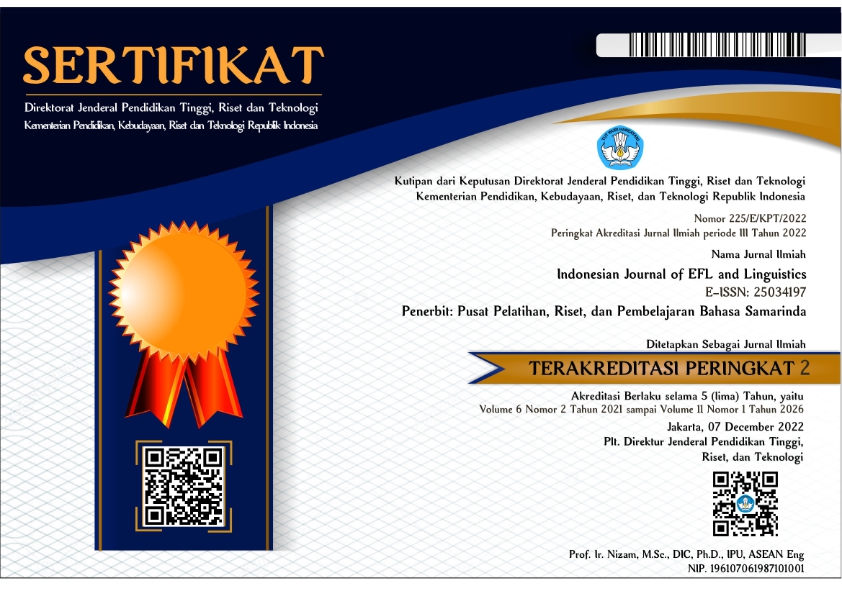Unlocking Phonological Proficiency: Exploring Allophonic Variation Using ELSA Speak App in Early Semester EFL Students at Mulawarman University
Abstract
Phonological proficiency is crucial for language growth in current English as a Foreign Language (EFL) education. The research aims to identify and analyze the proficiency of allophonic variations in students' phonetics using the advanced language learning tool ELSA Speak. It provides insights into their phonological development. This study employs a pre-experimental design methodology. A cohort of 31 EFL students from Mulawarman University participated in structured phonetic exercises using the ELSA Speak app around the beginning of the semester. Data was collected using pre-and post-tests, recording students' phonetic outputs, and entering detailed records of their engagement with the ELSA Speak app. The pre-experiment design enabled the evaluation of improvements in identifying allophonic variance and phonological competence before and after the intervention. The findings demonstrate a significant improvement in students' ability to detect and produce different variations of sounds, especially concerning allophones. The ELSA Speak app succeeded by offering immediate feedback, facilitating a more advanced understanding of phonetic distinctions. Based on the data, students demonstrated increased confidence and precision in their pronunciation, reassuring the students about the positive impact of the study. Additionally, they made significant progress in differentiating between challenging allophones for Indonesian and English. This study has highlighted the effective use of the ELSA Speak app in an English as a Foreign Language (EFL) setting, establishing its value as a beneficial tool for teaching pronunciation. The empirical data on the effectiveness of digital tools in improving the phonological competence of EFL students in the early stages of the semester can inspire and motivate educators, researchers, and professionals in English language education and linguistics to integrate such tools into their teaching practices.
Copyright (c) 2024 Indonesian Journal of EFL and Linguistics

This work is licensed under a Creative Commons Attribution-NonCommercial-ShareAlike 4.0 International License.




